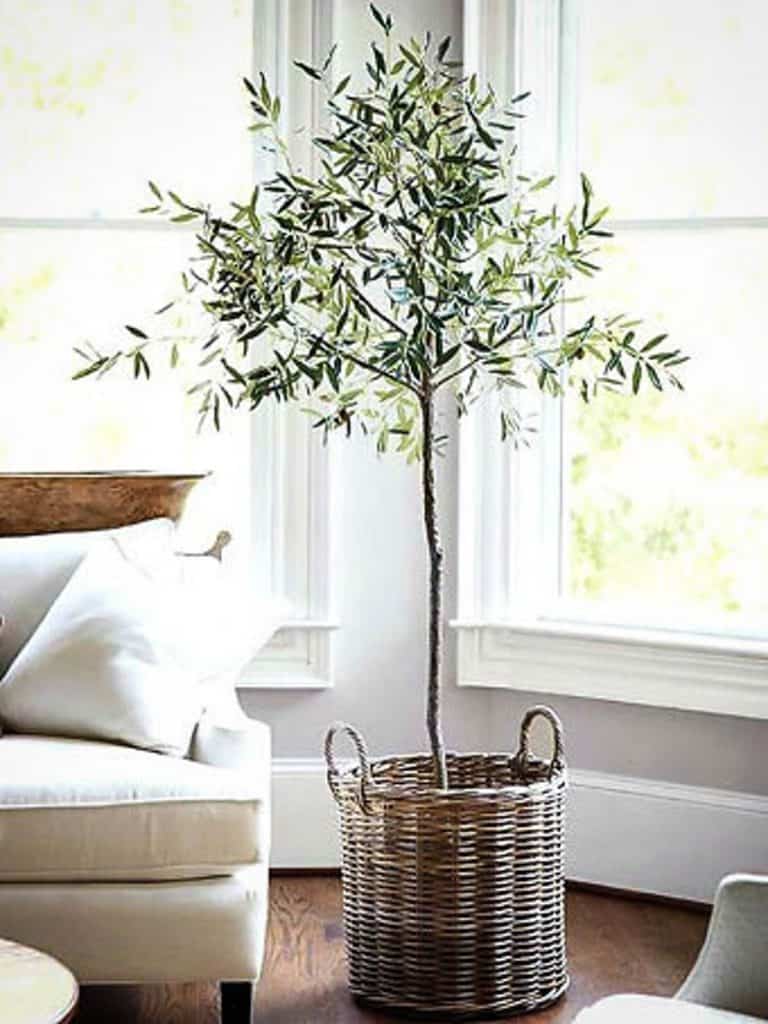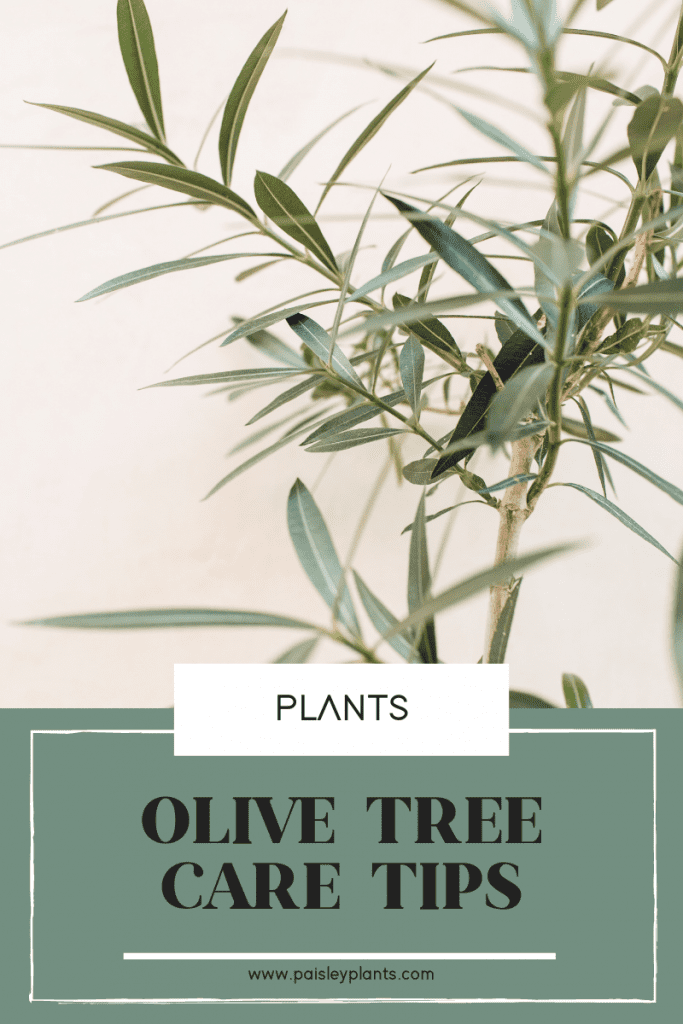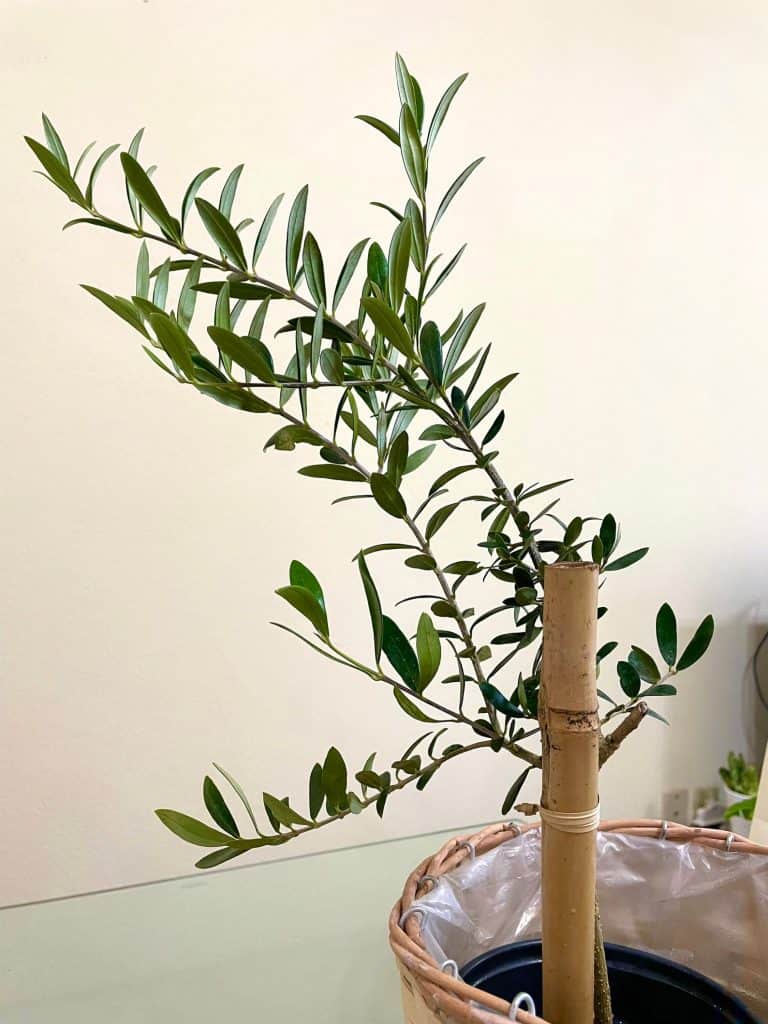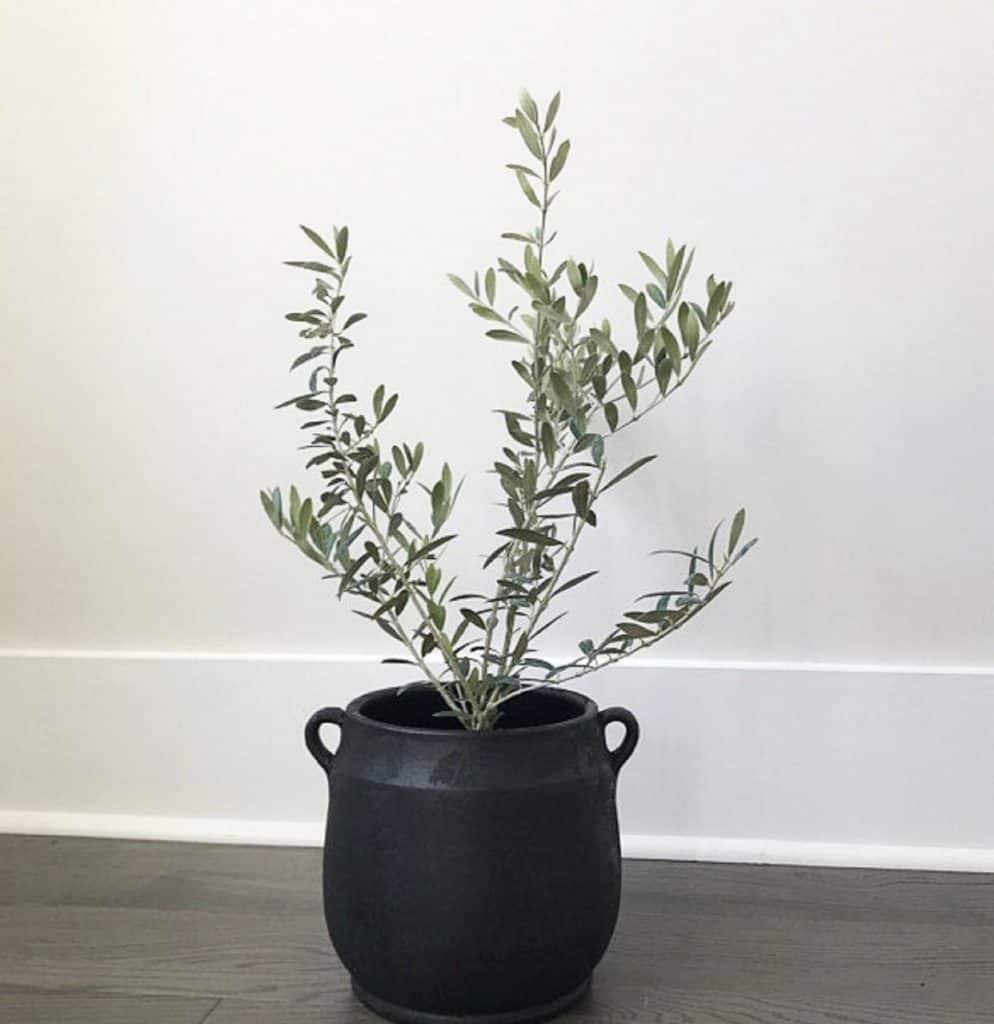Olive trees are quickly becoming the “it” plant on social media but how do you take care of it? Olive Tree care is actually fairly simple making these trees a great option for beginners and experts alike.
If you’ve just bought a new olive tree or hoping to add one to your home, you’ve come to the right spot! We’ll be sharing everything you need to know to have a happy, healthy olive tree!
There are many things to know that you can take care of your olive tree to make sure that it grows properly. Here are some of the ways to take care of it, and to make sure that your plant stays healthy if possible.
Table of Contents
History and Background of Olive Trees
This post includes affiliate links.

Image via Etsy where you can purchase!
As one of the oldest plants known to man, olive trees have a long history in the ancient world. Archaeologists have found olive pits and traces of olive oil in pottery and that’s dated back nearly 8,000 years ago.
However, despite the use in the ancient world, these plants have long developed and not only become useful for oil and plans, but as decorative house plants.
Because olive trees generally are from warmer climates, such as the Mediterranean, many of these plants end up being great indoor additions to people’s homes.
As mentioned, these plants are native to Europe, and they were incredibly popular in the ancient world. Many people use these to press olive oil, eat the olives, or even just to have them as decoration within their homes. This is still the same today, and part of the reason that many people love these plants.
Growing Olive Trees
Olive trees usually take about three years to come into maturity, and then you’ll begin to see some fruit on the tree. However, if you’re keeping these indoors, you definitely need to keep a dwarf plant inside. Otherwise, olive trees can grow to be extremely tall and might not fit within your home!
The average olive tree can be purchased when it’s generally in four-inch pots in only about 1 1/2 to 2 feet tall. However, many people can also choose to buy these in a single trunk and already at a height of four to five feet. It’s important to make sure that you’re choosing the right plant for your home.
If you’re growing your olive tree outdoors, spacing is also important. With a dwarf plant it’s incredibly easy to make sure that they stay far enough apart in order to grow properly.
Olive Tree Care

Now let’s get into the reason you’re likely here. How to care for your olive tree!
Lighting
These plants need a little bit of sunlight, but not as much as others. It’s best to choose a spot where it gets at least six hours of direct sun each day, such as that of a southern exposure.
If you let the leaves touch the window, the sunlight can burn them. Make sure it is a few inches off the window so you’re beautiful leaves don’t get scorched.
Watering
Watering your olive tree is not that difficult, but you should make sure you have a pot with good drainage holes. Using a large container with drainage holes will help to keep your plant healthy.
Make sure that the pot is half full of good potting soil or even use sand, which can be helpful for reducing the amount of water that’s retained.

Image via Etsy
If you have a plant outside, you can keep this plant on some bricks or blocks, and elevated, in order to let the water, drain out of the holes and to make sure it’s visible.
Before you water it stick one finger into the soil in inch deep, and see if it’s dry. If it is dry, then you definitely need to water it again. If it’s wet, leave it alone!
It’s important to recognize that these olive trees can grow slowly. Don’t over water your plant during the fall and winter.
Soil
Surprisingly, your olive trees will not want heavy or thick soil. The best soil to use for your olive tree is one that can drain very well and has a little bit of rocks in it.
Some of this can actually be mitigated by choosing the right potting soil as well as some perlite. You can even some small rocks that you find.
As far as containers go for your olive tree, you also want to make sure that you choose the right one. Make sure you choose a clay or one that won’t retain water, in order to allow for more draining.
If you choose a plastic container, it can be incredibly deadly to your tree. Plastic pots won’t allow it to drain properly which can kill your plant.
Fertilizer
With your olive tree, you might not actually need to have any fertilizer at all. When you’re looking to find an olive tree for your choice of houseplant, make sure you find a European olive tree.

Image via Etsy where you can purchase!
These are ones that can usually be self-fertilizing! This makes it incredibly easy for you to not have to fertilize every season.
Additionally, if you would like, you have the choice to use conventional fertilizer. This will allow for new growth and to help sustain it.
However, it should be noted that you should never add fertilizer to a new olive tree that you just planted. This can taint the growth, and not allowed to properly adjust to the new environment. T
Temperature
Because olive trees are used to more of a warmer climate, many individuals who live within USDA zones 6 or lower will have more trouble growing these plants. Olive trees do not handle cold that well and need to be brought in when it becomes colder outside.
During the summer and some of the spring, you can keep your olive tree outside. However make sure to give them a little bit of shade and not too much sun.
Also, make sure to avoid any nights where frost can develop on your tree. This can be significantly damaging to your plant, as well as permanently leave leaves burned or dead.
Humidity
Luckily for olive trees, they are native to the Mediterranean, so they do not need that much humidity. In fact, they usually can tolerate dry air and do not need to be any further misted than the regular watering would do.
However, you definitely need to make sure that you’re watering appropriately! As mentioned above, check the soil to make sure that it’s not incredibly wet, or too dry.
Pests
Olive trees can end up with some pests, but not too many. If you end up seeing some scaling on your plant, this is totally normal. If you do see that, make sure to find any sap-sucking insects that you might find on the leaves.
To treat this, you’ll need to have some insecticidal soap, in order to kill the insects properly.
How to Get Fruit
Despite the fact that the olive trees are used to warmer climates, it actually will not produce fruit until there is a significant drop in temperature. There should be about two months of temperatures below 50 degrees in order to stimulate flowering. This will allow for the fruit to develop.
It’s not likely that you will end up with fruit indoors. If you want fruit you should definitely make sure to keep your plant outside as much as possible. Always make sure to watch for frost or too much sun.
Toxicity
Luckily for animal lovers, there is no significant signs that tell that this plan is toxic to cats or dogs. That means that you can have dwarf olive trees within your home, without worrying about your plants hurting your pets.
These are some of the few pet safe house plants, and some of the most beautiful ones as well that produces delicious fruit for you to eat.
Harvest
If you’re looking forward to the fruit of your new olive tree, then you definitely need to know when to expect this to happen. There should be minimal pruning during the first four years in order to make sure that you have enough fruit on your tree, because then in September and October, there will be fruit that will be developed enough on the tree to pick off.
If you wait until January or February, you will be able to have plenty of fruit in order to press into oil, can, or even use for your salads and for your charcuterie boards. After growing such a beautiful house plant, you truly get a reward that tastes delicious, and you can share with your family and friends!
Conclusion
Taking care of your olive tree is not difficult, but you need to take these steps into account in order to make sure that your tree is healthy and truly cared for. If you are unable to properly support the plant, then you likely will not have fruit, or a beautiful tree tooenjoy.
With all these steps in mind, you too will be able to have an amazing plant an amazing addition to your house, one that is pet friendly and delicious once the harvest arrives!
Here’s other fun tall plants to try!


I just got a tree. I think it has scale. The bark is covered in spots. Is that normal or I’m I right…it’s scale.